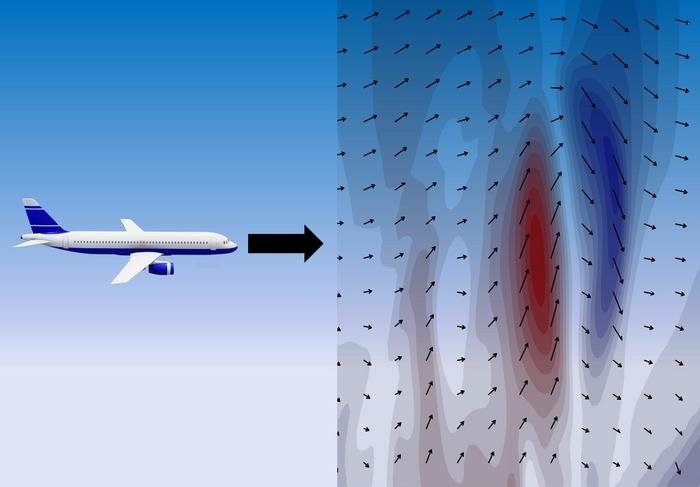
The red and blue regions indicate the wind speed differences with the turbulence due to the Kelvin-Helmholtz instability. (Image Credit: Ryoichi Yoshimura)
Nagoya University researchers recently stimulated clear air turbulence (CAT) around Tokyo by using a numerical weather prediction model on Japan's Fugaku supercomputer. They suggest this could lead to an improved predictive model designed to prevent incidents resulting from clear air turbulence. According to their study, the Kelvin-Helmholtz instability wave collapse causes this turbulence. Verifying the simulations against real-world data can help the team better understand turbulence production and how it affects aircraft.
Generally speaking, CAT can occur on a clear day or if there are no atmospheric disturbances. While scientists don't completely understand why CAT occurs, they believe it's caused by wind shear and atmospheric instability. Clear air turbulence can cause damage, harm passengers and crew members, and disturb flight operations. Plus, CAT isn't easy to detect and predict because it doesn't have any visible indicators, like clouds or stormy weather.
Swirling and circulating winds can cause sudden airflow changes, producing eddies that shake aircraft. Researchers model CAT via large-eddy simulation (LES), a computational fluid dynamics technique that simulates turbulent flows. But the LES computational cost makes it challenging since complex interaction simulations require lots of computational power. That's where the Fugku supercomputer comes into play — its high performance allows the machine to run turbulence generation simulations.
In late 2020, CAT instances occurred near Tokyo due to low pressure and a nearby mountain range. Scientists then performed an ultra-high-res simulation to replicate that turbulence. They discovered that CAT is real rather than a numerical artifact, and the Kelvin-Helmholtz instability wave collapse caused wind speed disturbance. This type of instability takes place at the interface between two layers of air with different velocities. The higher velocity layer produces a wave-like effect while pulling at the lower velocity layer. Atmospheric waves growing from the west and collapsing in the east produce several fine vortices, generating turbulence. The flight data also had signatures of similar turbulence.
The researchers verified the simulated vortices against real-world data. "Around Tokyo, there is a lot of observational data available to validate our results," said Dr. Ryoichi Yoshimura of Nagoya University. "There are many airplanes flying over the airports, which results in many reports of turbulence and the intensity of shaking. Atmospheric observations by a balloon near Tokyo were also used. The shaking data recorded at that time was used to show that the calculations were valid."
Simulating eddies can help scientists understand CAT, potentially leading to aviation applications. In turn, pilots could adjust the aircraft's flight levels if they know about CAT occurring ahead of time.
"The results of this research should lead to a deeper understanding of the principle and mechanism of turbulence generation by high-resolution simulation and allow us to investigate the effects of turbulence on airplanes in more detail," said Yoshimura.
"LES would provide a smart way of flying by providing more accurate turbulence forecasts and real-time prediction," he added.
Have a story tip? Message me at: http://twitter.com/Cabe_Atwell
